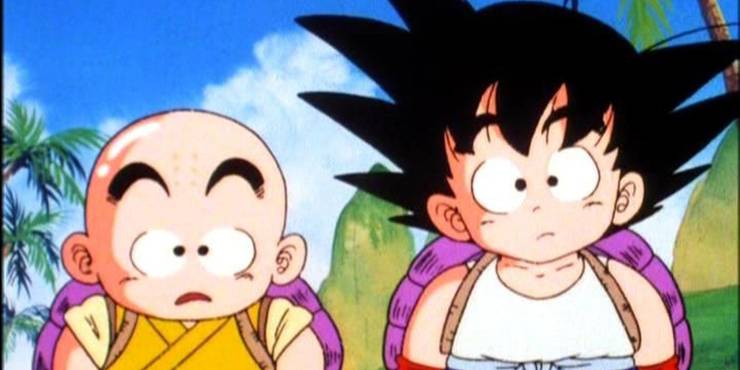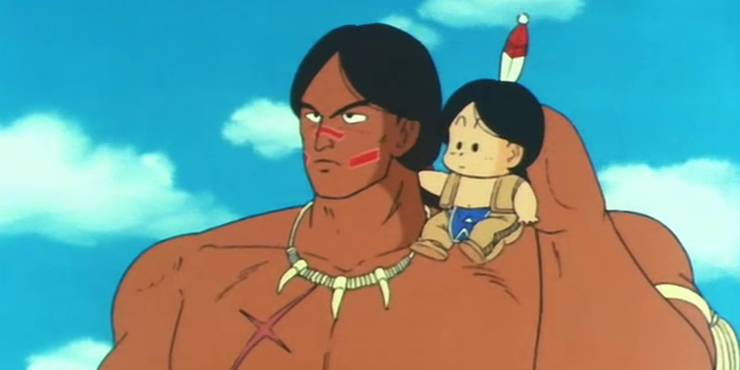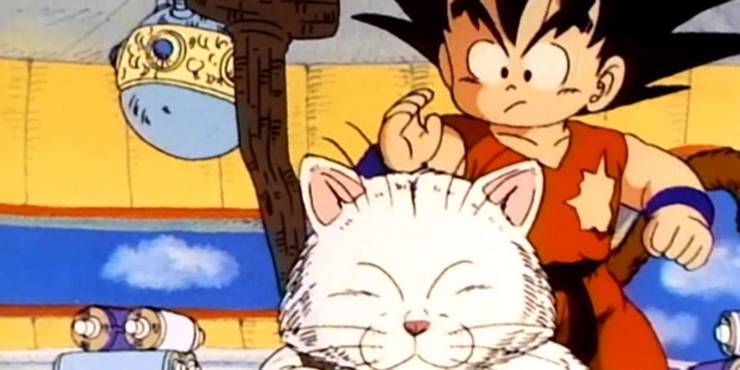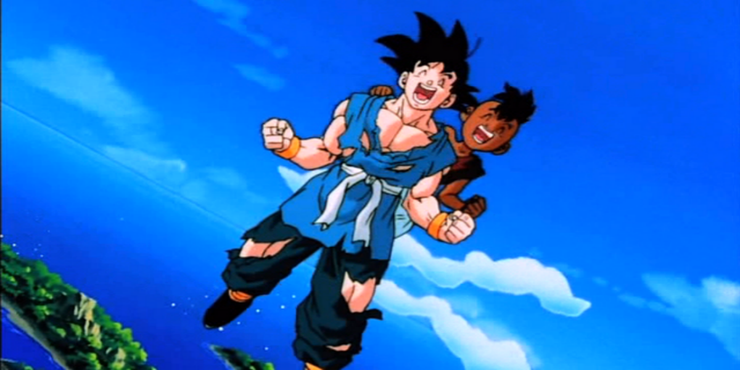Dragon Ball 10 Ways Goku Changed Between The Start & End Of The Original Series
Goku’s character arc may not be as bombastic as Gohan or Vegeta’s, but Son Goku is still one of the most developed characters in Dragon Ball.

Goku is often accused of having a “flat character arc,” developing far less than the rest of Dragon Ball’s cast. The reasoning behind the argument tends to lie in Goku’s rather consistent personality, but to claim he doesn’t change, develop, or mature over the course of Dragon Ball means ignoring how often the story challenges his ideals and forces him to grow.
Goku begins Dragon Ball a child, gradually maturing from arc to arc, but his development doesn’t suddenly stop when he becomes an adult. If anything, Dragon Ball Z uses his character development to outright redefine who Goku is. Goku’s character arc may not be as bombastic as Gohan or Vegeta’s, but Son Goku is still one of the most developed characters in Dragon Ball.
10 Call To Adventure

Goku at the start of Dragon Ball is a mostly passive character. He’s lived in the mountains alone for years by the time he meets Bulma, his adoptive grandfather having passed away years prior. In spite of the apparent loneliness, Goku is content living in the mountains and off the land. Unlike most heroes at the start of their journey, Goku isn’t striving for greater things.
At the same time, Goku isn’t attached to his current status and shows no qualms following Bulma on her hunt to gather all seven Dragon Balls. Although Goku enters Dragon Ball by following Bulma’s lead more often than not, it doesn’t take long for Goku to develop agency.
9 Developing Wanderlust

Traveling with Bulma develops a wanderlust in Goku. As he sees the world, meets stronger people, and generally just bonds with his friends, Goku’s own motivations begin to manifest. Meeting Roshi early in the arc– and subsequently seeing him fire the Kamehameha– leave a massive impact on Goku.
While Roshi’s suggestion to train Goku could have been easily tossed aside so early in the series, Goku never forgets the Turtle Hermit’s offer. Come the end arc, Goku splits himself off from the rest of the group in order to go on his own solo adventure.
8 There Will Always Be Someone Better

Goku’s training under Master Roshi is not only important for his character, but Dragon Ball as a whole. It’s here where Akira Toriyama starts to outline the core themes which define the story: most notably, the notion that there will always be someone better. It isn’t enough that Roshi train Goku into a powerful martial artist, he needs to learn humility.
Roshi enters the tournament as Jackie Chun specifically to defeat Goku in the finals and prevent the boy from developing an ego. While Goku puts up a good fight, he ultimately loses. Instead of sadly accepting defeat, Goku eagerly awaits the next time he’ll get to fight someone as strong as Jackie Chun– outright flying off into the Red Ribbon Army arc to meet such people.
7 One Selfless Act

Although the Red Ribbon Army arc is partially kicked off by Goku’s desire to meet stronger people and see the one (an extension of his developing wanderlust from the start of Dragon Ball,) he’s primarily motivated by a desire to find his grandfather’s keepsake: the Four-Star Dragon Ball.
It takes Goku half the arc to find the Dragon Ball, but when he finally does, Tao Pai Pai is introduced, kills Bora, and leaves Goku for dead. Instead of calling his journey short, Goku puts his own wants aside & vows to collect all seven Dragon Balls in order bring Bora back to life– even if it means losing his grandfather’s Dragon Ball.
6 From Reactive To Proactive

Before Goku can collect all seven Dragon Balls, however, he needs to train. Atop the Sacred Tower of Karin lies Master Karin, Goku’s second martial arts master. Where Master Roshi taught Goku discipline, humility, and life skills, Karin helps Goku overcome his greatest flaw as a martial artist.
Dragon Ball makes a point to showcase Goku reacting to his opponents– it’s notably how he loses to Jackie Chun and Tao Pai Pai– which Karin points out. Goku’s three days of training with Karin involves him trying to catch the cat, the whole time subtly building his breathing technique and working on his reaction time. More importantly, Goku becomes more proactive, creating openings rather than waiting for them.
5 Killing Intent

One of the most notable distinctions between Goku’s early depiction and in the Z-era is his killing intent. Goku really has no qualms with killing in early Dragon Ball. He wipes out the entire Red Ribbon Army without so much as batting an eye and is actively out for blood during the Demon King Piccolo arc. It isn’t until Goku starts training with God that his relationship with killing changes.
Even then, Goku’s desire to spare Majunior stems just as much from his genuine love of martial arts. Goku’s relationship with killing only deepens when he learns he’s a Saiyan, sparing enemies whenever Vegeta is present. By the end of the Frieza arc, however, Goku firmly recognizes that some opponents need to be killed– a lesson he tries to teach Gohan in the Cell Games.
4 Strongest Under The Heavens

On the subject of Goku’s relationship with martial arts, he enters the 23rd Tenkaichi Budokai far more confident & competent than ever. Training with God does wonders on Goku’s personality and temperament. He was never a particularly angry child, but the older Goku is calm, collected, and doesn’t falter in the face of danger.
After losing both the 21st and 22nd Tenkaichi Budokai in their final match, Goku finally becomes the “Strongest Under the Heavens.” The 23rd Tenkaichi Budokai is one of Goku’s best fights in terms of characterization, making use of clever strategies against Tenshinhan & Piccolo while asserting what defines him as a martial artist: tenacity and a sincere want to be better.
3 Kakarot, The Saiyan

After defeating Piccolo in the 23rd Tenkaichi Budokai, Goku settles down with Chichi and starts a family. He keeps up with training just enough to still be stronger than Piccolo come the start of Dragon Ball Z, but being a father has understandably distracted Goku. When Raditz arrives at the start of the Saiyan arc and reveals Goku’s heritage, there’s little he can do to fight back.
More importantly, Raditz’s reveal that Goku is a Saiyan recontextualizes his character. Where Goku was once one of the strongest Earthlings alive, he’s now one of the weakest Saiyans. Goku becomes an underdog which the Saiyan arc uses to focus on themes of class– particularly the confrontation between the Lower Class Goku and the Elite Vegeta.
2 Son Goku, The Super Saiyan

Even though Goku accepts his Saiyan heritage quick enough– especially as a point of strength– it clearly eats away at him throughout the Saiyan and Namek arcs. As mentioned, Goku does not kill in the presence of Vegeta in either saga. He consciously chooses to spare Nappa, Recoome, and Butta– all of which Vegeta kills himself.
If Vegeta represents Saiyan culture in its purest form and Goku is a Saiyan nurtured to be anything but, it stands to reason Goku wouldn’t want to give into any Saiyan impulses around Vegeta. By the end of the arc, however, Goku realizes that these two halves of his heritage can coexist together. Taking on Vegeta’s pride as a Saiyan and giving into his emotions like an Earthling would when Krillin dies, Son Goku is able to become the legendary Super Saiyan.
1 Passing The Torch Onto The Next Generation

While Goku resolves most of his personal conflict on Namek, he still develops up through the end of Dragon Ball, with his arc only over after he flies off to train Uub. Throughout the Cell and Majin Buu arcs, a wiser & more mature Goku starts to place importance on the idea of personal responsibility (particularly in the case of the Buu saga) and passing the torch onto the next generation.
Goku first attempts this at the end of the Cell Games, even symbolically sacrificing his life so that Gohan was put into the sole lead. Even though Goku ends up taking his role of main character back in the Buu arc, he still pushes the idea that the next generation should be the ones saving the Earth. This ends up tying into the theme of personal responsibility (notably the fact Goku is responsible for the Buu arc to begin with,) but the 28th Tenkaichi Budokai ends with Goku finally finding a true successor in Uub– the reincarnation of Majin Buu, his greatest opponent yet.
Comments
Post a Comment